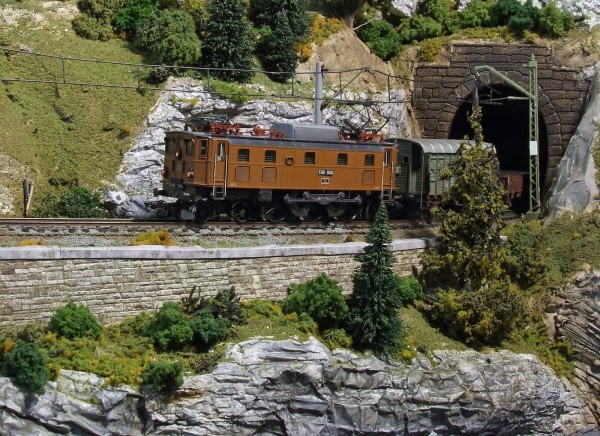By Jeff Moorman
Next Clinic:
Our next clinic meeting is this Thursday, April 2. We intend to show a video of the building of a local layout by Dr. Scott Campbell. It contains many recognizable scenes from around Washington State. We were originally going to show this in February, but things didn’t work out.
And, time permitting we’ll say a few more words about operating on small layouts.
The church continues its remodeling effort. I will not know what room we will be in until after this is posted. Just come in the main door and we’ll have someone show you where to go,
Prior Clinic:
Last month we talked about adding interest to “playing” with trains on a small layout (even if it is just a short shelf). It seems to work best when you try to simulate a task done by real railroads. There needs to be a purpose to your play.
Some ways of imagining little layouts as parts of bigger railroads were discussed. We ended with a few words about using chance (i.e. dice or a coin) to introduce an element of randomness to these operations.
Dennis T brought another of his N scale T-TRAK modules to show. This one had a river running through it. Two substantial bridges were needed to get the mainline tracks and a diverging branch across the water. Plus, there was a nice little park / playground down by the river for use by the area’s model residents.
Dennis also brought along a sample of a wiring buss he devised to power his module set-ups.

Dennis T power buss
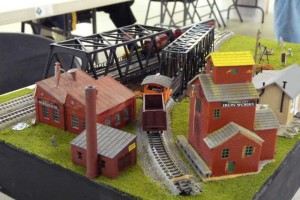
Dennis T module end
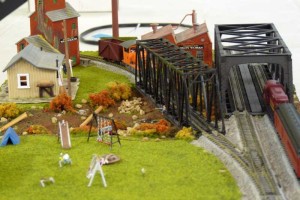
Dennis T module end 2
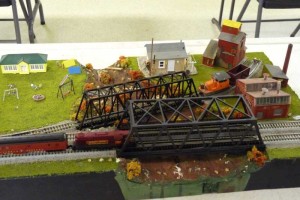
Dennis T module overall
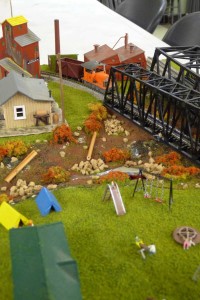
Dennis T module playground
For those who picked up a name tag blank at the last meeting, don’t forget to wear it and show everyone what a marvelous job of decorating you did.
Directions: We meet at the Ronald United Methodist Church, 17839 Aurora Avenue North, Shoreline, WA. That is on the west side of Aurora (State Route 99) between 175th and 185th Streets and more specifically, between the Cadillac dealer on the south and Deseret Industries to the north. Going southbound on Aurora, make a right-hand turn into the church driveway immediately after passing the Deseret location. The parking lot is at the rear of the church. From the parking lot go up the steps to the main entrance.
Meetings are the first Thursday of each month, usually September – June. However in June we often do something different, so there may be no “regular” meeting. Doors open at 7:00 PM and the program starts at 7:30.
The next regular evening meeting is April 2 and the one after that is May 7. Hope to see you there or at least sometime on down the line.






